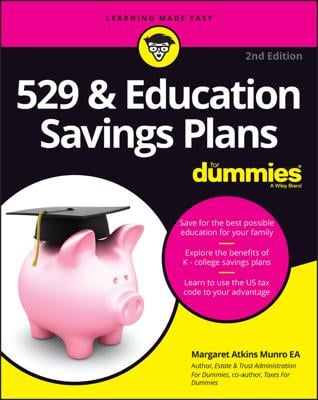Parents (and other relatives) who fund Section 529 plans need to be very conscious of what constitutes a qualified higher education expense and what doesn't. The following table lists qualifying higher education expenses.
![[Credit: ©iStockphoto.com/zimmytws]](https://www.dummies.com/wp-content/uploads/479533.image0.jpg)
| Type of Fee | Full-Time Student at an Eligible Institution | Part-Time Student at an Eligible Institution |
|---|---|---|
| Tuition | Yes | Yes |
| Room and board (paid directly to educational institutions) | Yes | If enrolled half time or more, yes; otherwise, no |
| Room and board (paid directly to other landlord and grocery store) | Yes, to extent allowed by budget amount set by school | If enrolled half time or more, yes, to extent allowed by budget amount set by school; otherwise, no |
| Fees (as required by the institution) | Yes | Yes |
| Books, supplies, and equipment (including computers) | Yes, to extent allowed by budget amount set by school | Yes, to extent allowed by budget amount set by school |
| Expenses of a special-needs beneficiary necessary for enrollment at an eligible institution | Yes (regulations defining qualifying expenses are still pending) | Yes (regulations defining qualifying expenses are still pending) |
All eligible schools are now required to provide you with the price of what you will pay them directly (tuition, fees, and often room and board) and the total cost of an academic year. This is called the budget.
The amount of qualified expenses you may be able to use Section 529 plan distributions to pay for is limited if you fall into any of these categories:
If your qualifying student receives tax-free educational assistance (outright grants and scholarships), the amount of expenses that would otherwise qualify will be reduced by the amount of the tax-free aid.
If your qualifying student is the beneficiary of a Coverdell Education Savings Account and receives distributions from that plan, all qualified expenses need to be divided proportionately between the two plans.
If you want to take the Hope and/or Lifetime Learning Credits on your income tax return, you need to use taxable income to pay for at least a portion of your student's qualifying expenses.
Distributions made from Section 529 plans for payment of qualifying educational expenses are free from federal income tax. The federal government has also built in many safeguards to make certain that you don't abuse its kindness:
Using plan distributions to pay nonqualifying expenses: If the designated beneficiary takes a distribution but doesn't use it to pay qualified expenses, the accrued earnings on that distribution will be taxed at normal income tax rates, plus an additional 10 percent.
Terminating a plan, because the designated beneficiary chose not to continue his or her education or because some money is still left in the plan after completing that education: When a plan is terminated (rather than rolled over into another plan or beneficiary), the earned income that's distributed, whether to the designated beneficiary or the plan owner, along with the original contribution amounts is taxable. In addition, it's subject to the 10 percent additional penalty.
Distributing funds on account of the death of the designated beneficiary: If you need to distribute funds to a beneficiary's estate or to someone other than the designated beneficiary, due to the death of that beneficiary, the earned income portion of the distribution is taxable; however, no additional 10 percent tax is assessed.
Making distributions due to the long-term disability or impending death of the designated beneficiary: The IRS now allows distributions from Section 529 plans to be made to terminally ill beneficiaries and to beneficiaries with a long-term disability. The earned income portion of these distributions is taxable, but no 10 percent additional tax is assessed.
Using the Hope or Lifetime Learning Credits: If you use certain qualified educational expenses to qualify for the Hope and Lifetime Learning Credits, those expenses will no longer qualify for tax-free treatment, even if you paid for them from your Section 529. The earnings portion will be taxed, with no additional 10 percent tax.
Receiving education benefits that are excludable from gross income: If you receive qualified scholarships, veteran's assistance, funds from employer tuition-reimbursement plans, or other tax-free benefits, the earnings on Section 529 plan distributions are taxable only if the amount of the 529 plan distribution is less than or equal to the amount of other tax-free educational assistance. There is no 10 percent additional tax.

